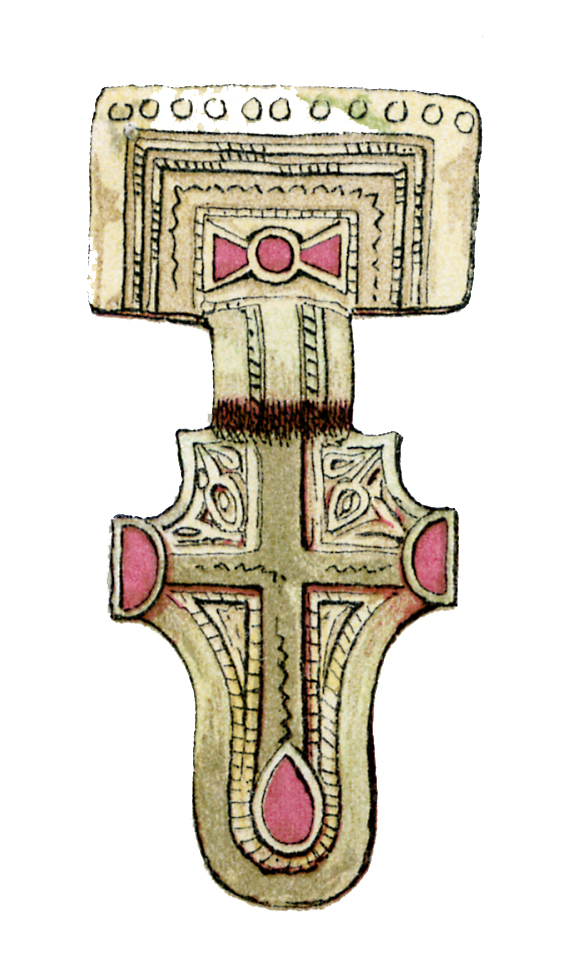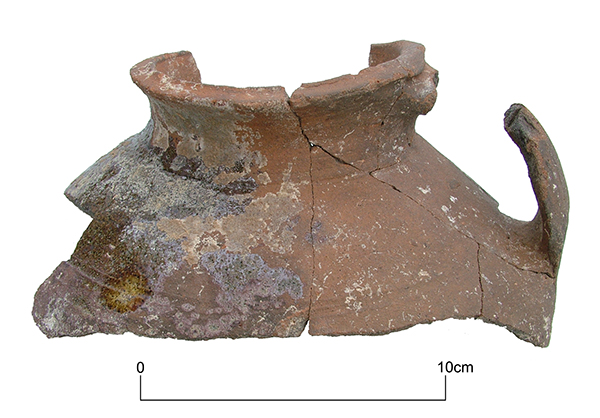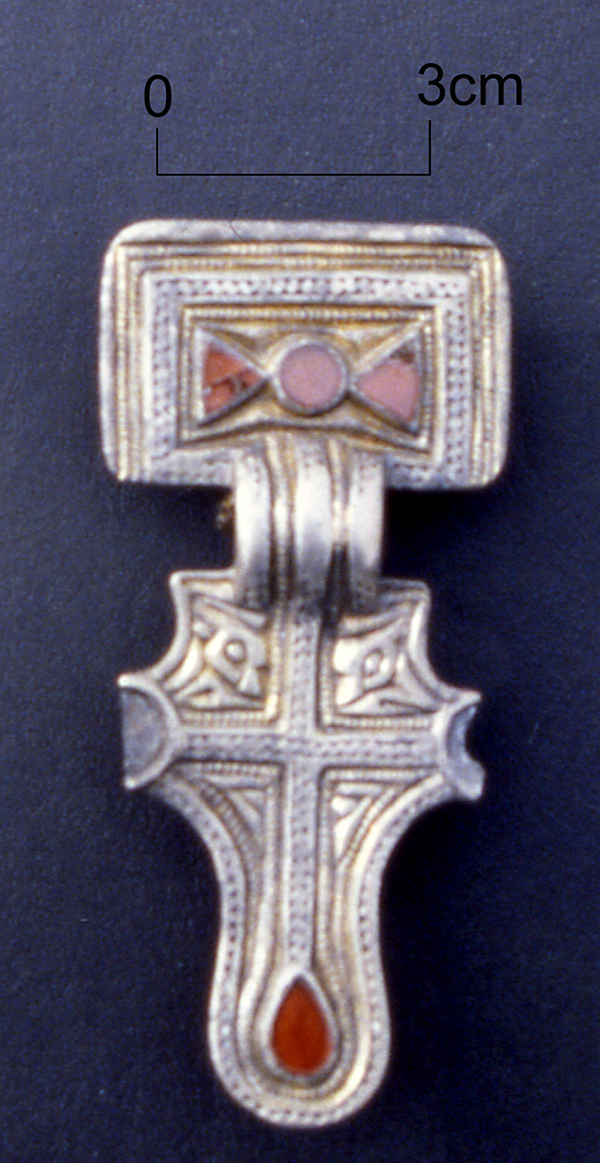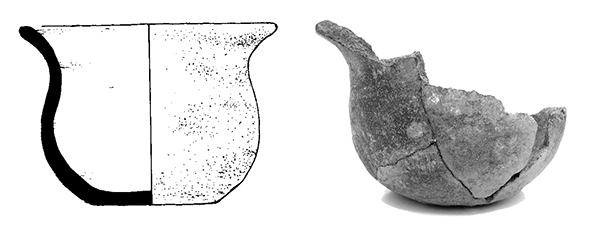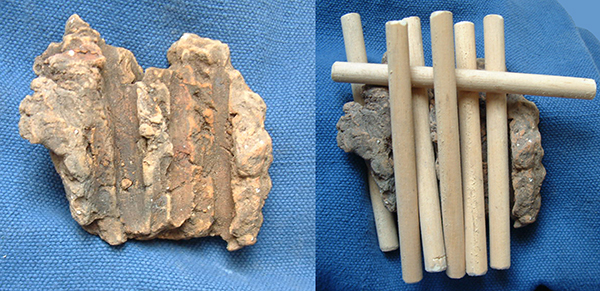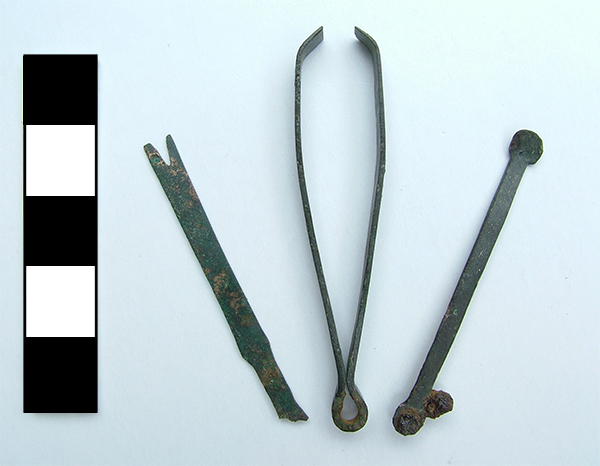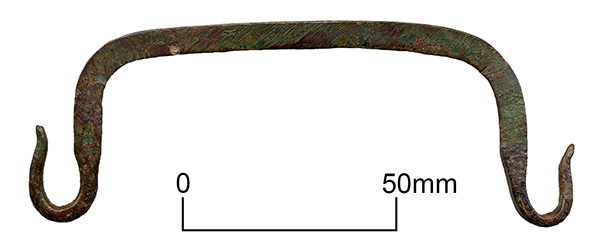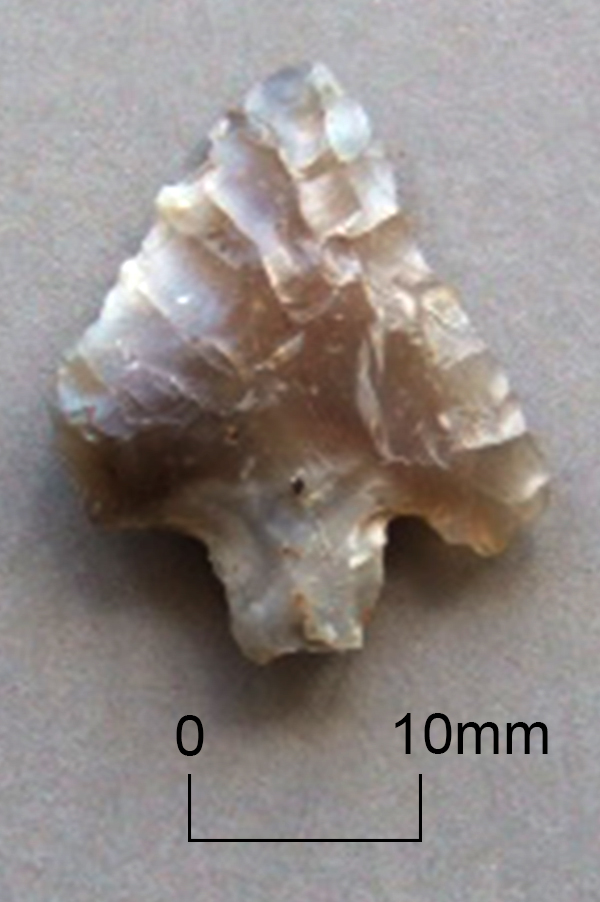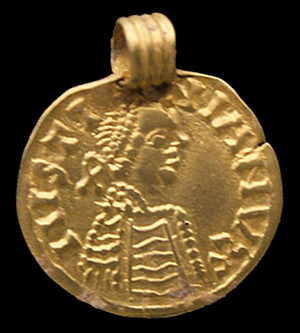
Today’s VM_365 Day 150 image shows a gold pendant excavated from an Anglo Saxon grave at Sarre in 1990. The pendant is no longer in our possession and the image above was taken at the time of the excavation.
The large, well cut grave (grave 286) had been disturbed by grave robbing in antiquity and skeletal material, objects and fragments were scattered throughout the fill. The skeletal material that could be identified indicated that the skeleton was of an adult and the grave goods suggest that it is likely to be an adult female. Objects found within the grave included a silver and glass keystone pendant, an iron key, iron knife, amber and glass beads, a bronze casket handle and a Bronze key.
The pendant, weighing 1.63 grammes, is a made from a gold tremissis; a 6th century Merovingian coin that has had a hanging loop added. The coin was minted in Austria or Burgundy in the name of Justinian I (527-565 AD) and its composition has been measured using X-ray fluorescence spectrometry comprising 85.6% gold, 11.9% silver and 2.35% copper.
Reference
Perkins, D. R. J. 1991. The Jutish Cemetery at Sarre Revisited: A Rescue Evaluation. Archaeologia Cantiana CIX pp139-166
